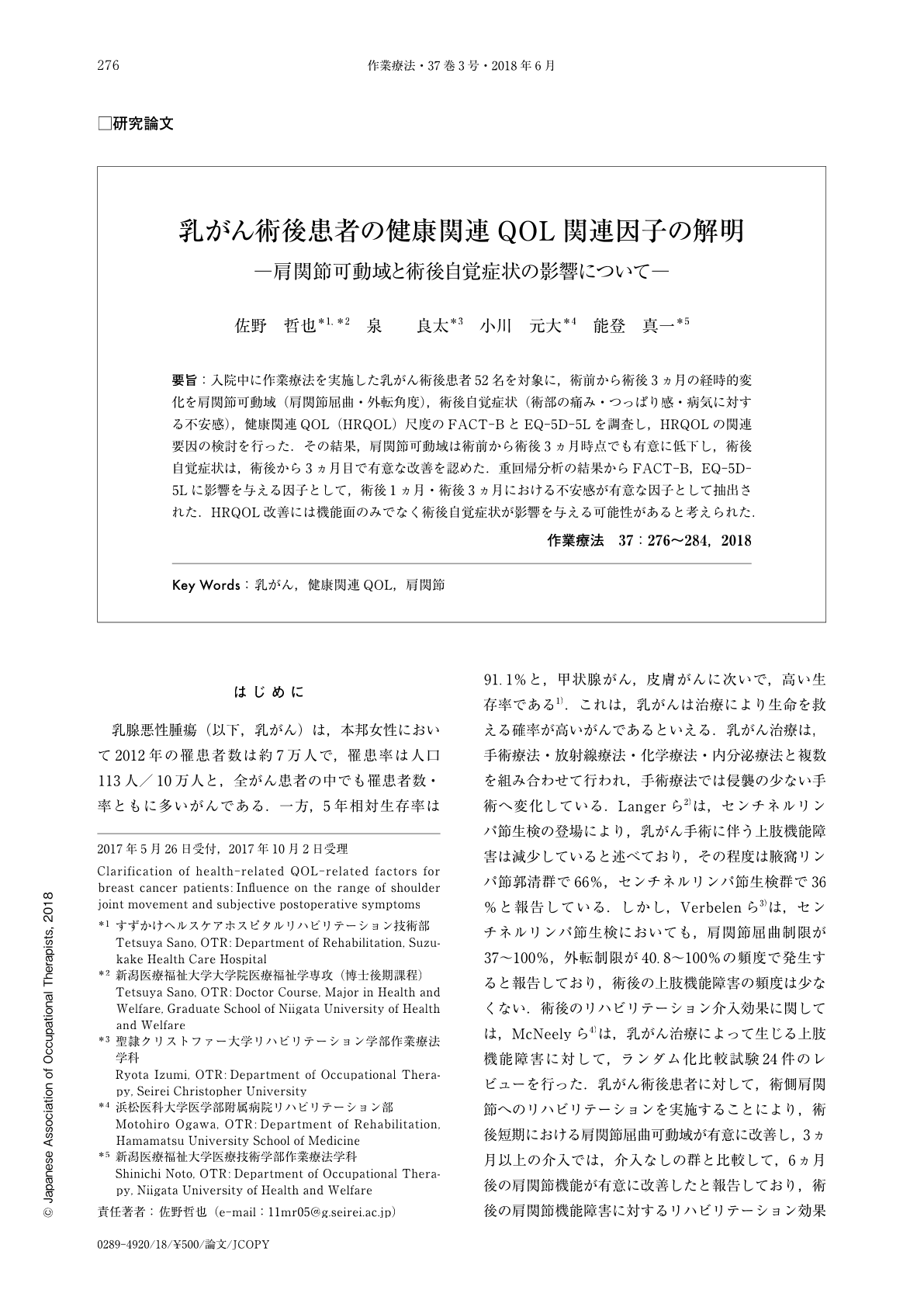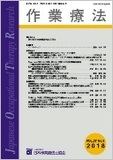Japanese
English
- 販売していません
- Abstract 文献概要
- 1ページ目 Look Inside
- 参考文献 Reference
要旨:入院中に作業療法を実施した乳がん術後患者52名を対象に,術前から術後3ヵ月の経時的変化を肩関節可動域(肩関節屈曲・外転角度),術後自覚症状(術部の痛み・つっぱり感・病気に対する不安感),健康関連QOL(HRQOL)尺度のFACT-BとEQ-5D-5Lを調査し,HRQOLの関連要因の検討を行った.その結果,肩関節可動域は術前から術後3ヵ月時点でも有意に低下し,術後自覚症状は,術後から3ヵ月目で有意な改善を認めた.重回帰分析の結果からFACT-B,EQ-5D-5Lに影響を与える因子として,術後1ヵ月・術後3ヵ月における不安感が有意な因子として抽出された.HRQOL改善には機能面のみでなく術後自覚症状が影響を与える可能性があると考えられた.
52 post-operative breast cancer patients undergoing occupational therapy during hospitalization were investigated. Temporal changes for 3 months from pre-operation to post-operation in terms of the range of shoulder joint movement (flexion of shoulder joint/abduction angle), postoperative subjective symptoms (pain of surgical site/stretched feeling/feelings of anxiety), and health-related QOL (HRQOL) scale: FACT-B and EQ-5D-5L, were examined, along with HRQOL-related factors. As a result, the range of shoulder joint movement was significantly decreased even from pre-operation to 3 months after surgery, but the subjective symptoms were significantly improved in the third month after surgery. Considering the results from a multi-regression analysis, anxiety during the first and third month after surgery was extracted as a significant variable in terms of factors influencing on FACT-B/EQ-5D-5L. Thus, functional aspects and postoperative subjective symptoms could possibly influence the improvement of HRQOL.

Copyright © 2018, Japanese Association of Occupational Therapists. All rights reserved.


